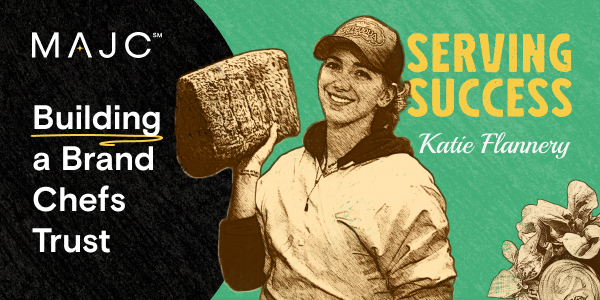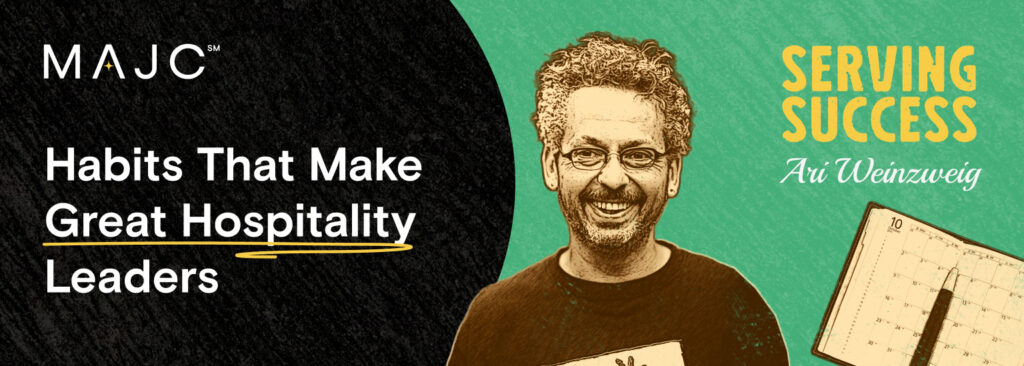What Is Restaurant Workforce Management? (And Why It Matters More Than Ever)

Top operators hire smarter, train more effectively, and lead teams that thrive.
Running a restaurant takes more than good food. It takes good people—hired with intention, trained with clarity, and supported with systems that set them up to succeed. That’s the heart of workforce management.
At MAJC, we’ve heard from dozens of chefs and operators on the Restaurant Ready podcast: building a sustainable, profitable restaurant starts with managing your team well. And that means understanding workforce management not as a software feature, but as a daily leadership practice.
This article breaks it down into three parts: Hire Smarter, Train Better, and Lead with Purpose. Here’s how the best operators are doing just that.
1. Hire Smarter
Workforce management starts with smart hiring, which means thinking beyond resumes and building a team that reflects your values and your restaurant’s future.
Chef Gavin Kaysen puts it plainly: “When you’re hiring, you’re not just filling a role. You’re investing in your culture.” For Gavin, the interview process includes conversations about long-term goals—not just availability.
Juan Perez, executive chef at Posto, agrees. He looks for adaptability, not perfection. “We’re not looking for the most polished cooks. We’re looking for people who want to grow.”
Tips for better hiring:
- Write job posts that reflect your restaurant’s values, not just the role.
- Use behavioral questions to assess attitude and culture fit.
- Cast a wide net. Many operators report success hiring students, second-career professionals, and part-time candidates who bring unexpected strengths.
2. Train Better
Training isn’t a two-week sprint—it’s a long-term investment in consistency, confidence, and culture.
Emily Luchetti, pastry chef and author, reminds us: “The biggest training mistake? Assuming people know what you know. You have to teach—even when it seems obvious.”
Entrepreneur Meghan Blair-Valero, founder of Fogged In Bookkeeping, echoes that. “You can’t just throw someone into the fire and expect greatness. Training is teaching. It’s mentorship. It’s giving someone a chance to succeed.”
What strong operators do differently:
- Document SOPs, but teach them in real time.
- Cross-train to build flexibility and reduce burnout.
- Reinforce culture in every training session—not just service steps.
- Offer feedback early and often. As Chef Tyler Florence shared, “People want to know how they’re doing. Don’t wait until they leave to tell them.”
3. Lead with Purpose
The best workforce systems fall apart without strong leadership. The operators with the healthiest, most effective teams lead with clarity, empathy, and accountability.
Zach Field, founder of Field Artist Management, says it best: “Lay the foundation before you build the house. If your SOPs are unclear or your schedule’s a mess, no amount of passion will fix it.”
Chef Michael Fojtasek leads through systems and self-awareness. “Growth is only sustainable if leadership evolves alongside it,” he told us on Restaurant Ready. That’s why he built training tracks and flexible scheduling across his restaurant group.
And Chef Maria Mazon reminds us that trust starts at the top. “When your team knows you’ve got their back, they’ll go the extra mile. But you have to go first.”
Leadership tips that make a difference:
- Share goals and performance metrics with your team.
- Hard-schedule breaks. Prioritize rest.
Build a feedback culture rooted in respect.
Keep your promises. If you say growth is possible, show the path.
The Bottom Line: Managing Your Workforce Means Managing Your Future
Restaurant workforce management is about structure. It’s about hiring with intention, training with clarity, and leading with empathy and consistency.
When your team has clear expectations, the right tools, and a culture that supports their growth, your restaurant performs better—not just in numbers, but in energy, loyalty, and guest experience.
As Chef Hugh Acheson puts it, “You don’t just hire hands—you hire hearts and minds. Treat them like it.”
At MAJC, AI helps us organize thoughts and speed up workflows—but every article is shaped, refined, and approved by real people who live and breathe this industry. We think honesty (like hospitality) works best when it’s real.


